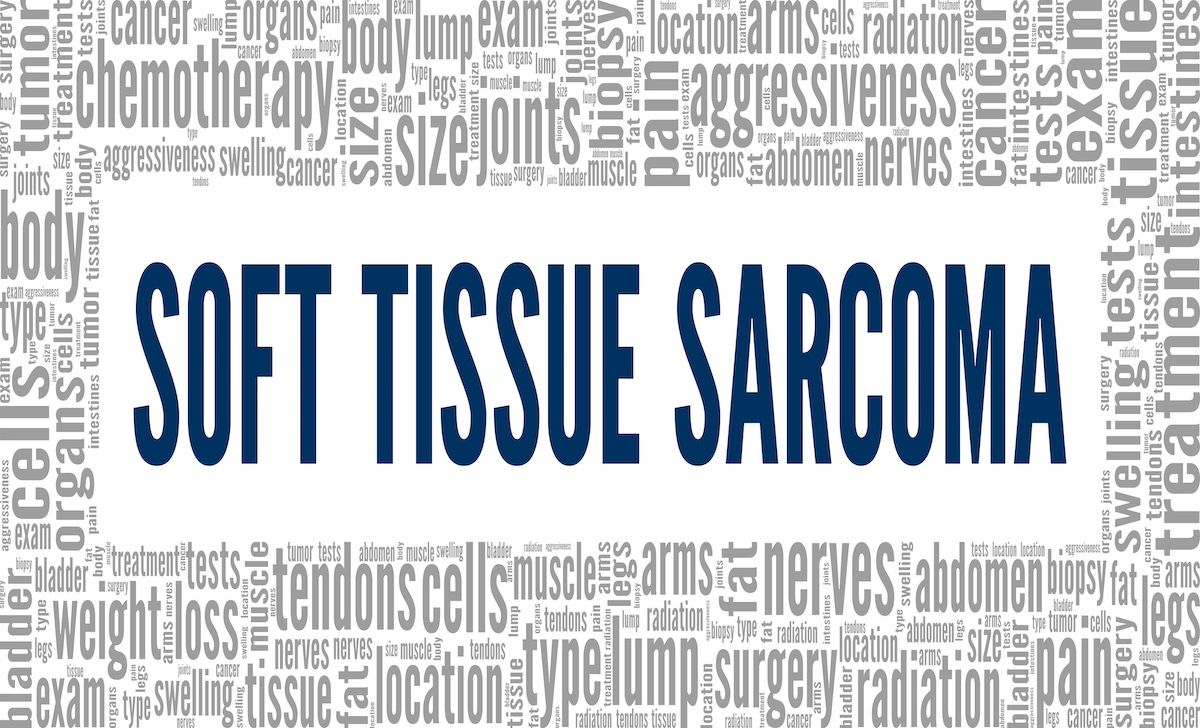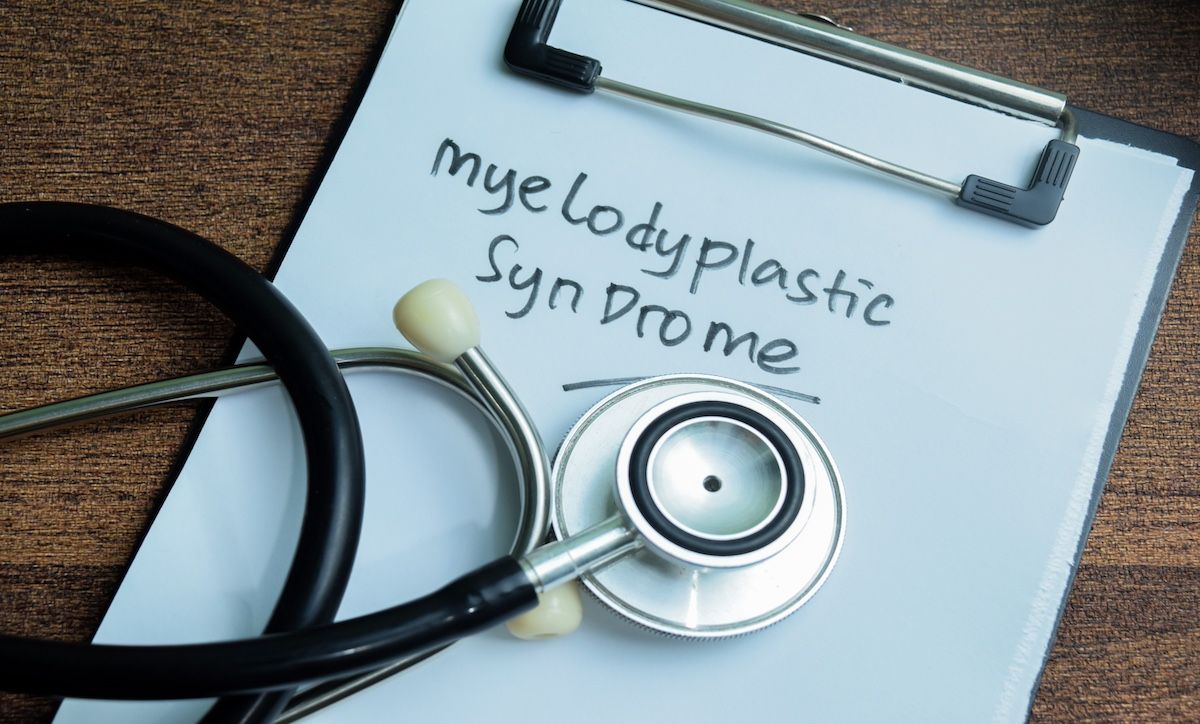News
Article
Pembrolizumab Promising in Treating Soft Tissue Sarcoma
Author(s):
Against the backdrop of a case report, pembrolizumab was investigated as immunotherapy for undifferentiated pleomorphic soft tissue sarcoma.
Noting that immunotherapy for soft tissue sarcoma (STS) has toxicity advantages compared with chemotherapy—the predominant adverse reaction is inflammation—an investigator used a case report and current treatment practices to evaluate pembrolizumab’s use as immunotherapy against the rare cancer.1
He published his findings in Journal of Medical Cases, noting, “Systemic chemotherapy has been a historic mainstay. Quality of life and performance status can be impaired, especially with prolonged treatment… While immunotherapy is an encouraging advancement, only certain sarcoma subtypes appear to respond. The reasons for this are not yet understood.”2
As of this report, the patient has undergone 109 cycles of immunotherapy over 6.5 years | Image Credit: Colored Lights-stock.adobe.com

Case Report
The 57-year-old patient presented in 2016 with a right thigh mass and a medical history inclusive of Parkinson’s disease, hypothyroidism, and hypertension. A 22 × 9.8 × 8.8-cm mass was seen on CT scan; there was no bone involvement, and 7 metastatic lung nodules were also seen. Pathology confirmed undifferentiated pleomorphic STS (UPS), and the patient initiated treatment with doxorubicin and olaratumab in February 2017. Radiographic restaging after 3 months showed enlargement of the thigh mass, and pathology confirmed grade 3 UPS.
Gemcitabine and docetaxel were initiated as second-line therapy in August 2017, “as often considered in this position for most soft tissue sarcomas including UPS,” the author wrote.
Restaging again showed disease progression, an additional right perihilar mass, and 2 enlarged lung metastases. Third-line therapy of 200-mg intravenous pembrolizumab was initiated in October 2017, based on data from the SARC028 trial showing robust patient response to the treatment, with patients with UPS having greater chances of response.3 The patient showed an immediate response, with restaging at 3 months showing a 40% reduction in his metastases per Response Evaluation Criteria in Solid Tumor measurement.2
Grade 1 pruritis was an adverse effect (AE) of the immunotherapy, and treated with topical emollients. His hypothyroidism treatment, levothyroxine sodium (Synthroid; AbbVie), required occasional adjustment, but overall, the pembrolizumab greatly improved his quality of life. The immunotherapy continued throughout 2018 despite radiation to newly recurrent disease in the right thigh, while his lung nodules continued to shrink.
Treatment was overall tolerated well, and restaging and clinical exams demonstrated ongoing immunotherapy response.
However, by January 2022, a rereferral to radiation oncology showed that a small heft upper lobe pulmonary metastasis was getting larger; the nodule responded to external beam radiation therapy of 50 Gy in 5 fractions), which was administered without stopping immunotherapy. By February 2023, the metastasis had disappeared, and the patient’s other nodules showed ongoing response. With knowledge of pembrolizumab’s benefits and its AEs from long-term use, the patient has continued with immunotherapy for 109 cycles as of May 2024, noting his favorable quality of life compared with that seen with prolonged chemotherapy.
Moving Forward
The study author noted that in similar situations, guidance on prolonged immunotherapy is lacking, with principal questions focusing on if treatment holidays are sometimes necessary and whether long-term AEs outweigh pembrolizumab’s perceived safety and efficacy. Guidance on next steps for immunotherapy in UPS, he added, stems from its use in the melanoma space, for which the standard of care is a 2-year treatment course.4,5
Much more data are needed on total duration of immunotherapy, especially that which pertain to potential resistance from long-term use, chronic vs intermittent or metronomic approaches, and a patient-centered approach.2 Additional considerations should include the financial and clinical resources available.
“Hopefully further research will soon elaborate guidelines for total duration of immunotherapy for UPS patients,” the author concluded. “Until then an individualized treatment approach is necessary.”
References
1. Mayo Clinic staff. Soft tissue sarcoma. Mayo Clinic. April 27, 2023. Accessed July 16, 2024. https://www.mayoclinic.org/diseases-conditions/soft-tissue-sarcoma/symptoms-causes/syc-20377725#:~:text=Soft%20tissue%20sarcoma%20is%20a,and%20surround%20other%20body%20structures
2. Reuben DY. Long duration pembrolizumab for metastatic undifferentiated pleomorphic soft tissue sarcoma with multimodality therapy. J Med Cases. 2024;15(7):136-142. doi:10.14740/jmc4237
3. SARC028: A phase ii study of the anti-PD1 antibody pembrolizumab (MK-3475) in patients with advanced sarcomas. ClinicalTrials.gov. Updated September 29, 2020. Accessed July 16, 2024. https://clinicaltrials.gov/study/NCT02301039
4. Topalian SL, Sznol M, McDermott DF, et al. Survival, durable tumor remission, and long-term safety in patients with advanced melanoma receiving nivolumab. J Clin Oncol. 2014;32(10):1020-1030. doi:10.1200/JCO.2013.53.0105
5. Robert C, Schachter J, Long GV, et al. Pembrolizumab versus ipilimumab in advanced melanoma. N Engl J Med. 2015;372(26):2521-2532. doi:10.1056/NEJMoa1503093




